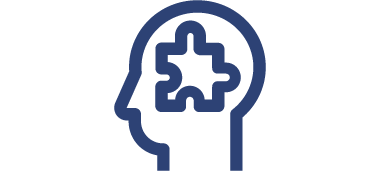Digitalization and decarbonization call for innovative capacity
Innovation is crucial to the success of a technology company. New solutions ensure sustainable, competitive advantages and therefore, future revenue and growth.
Global megatrends like digitalization and decarbonization, i.e., the shift to climate neutrality, are drivers of innovation. For a company’s innovation strategy, these two developments are both an opportunity and a mission. Digitalization enables disruptive innovations with new solutions based on artificial intelligence and machine learning. Climate change increases the need for resource-conserving products and processes that challenge a company’s innovative capacity. At Voith, our innovation projects are targeting these megatrends.


Voith is exploring opportunities for using hydrogen as an energy carrier. Among other things, the company is developing a high-pressure hydrogen tank for hydrogen-powered trucks.

Voith is working with companies and associations on the development of sustainable paper-based packaging solutions that avoid the use of plastic and help protect the environment.

Voith is continually improving and refining its products for hydropower. The HyCon GoHybrid, for example, is an environmentally friendly hydraulic power unit that substantially reduces the amount of oil needed compared with conventional high-pressure units.

Thanks to their AI models, innovations in the field of digitalization such as OnEfficiency.BreakProtect deliver savings to customers by allowing them to detect, understand and proactively prevent production interruptions.
Creative thinking needs an open culture of innovation
Innovation and creativity should not be confused. Creative thinking produces new ideas, while innovation is the translation of one or several ideas into a product or solution. Nevertheless, creativity is a prerequisite for innovation. Working creatively means abandoning entrenched ways of thinking and previously established success templates to break new ground.

Open innovation and co-creation: Innovations emerge from partnerships
For a long time, especially in engineer-driven companies, there was a culture of “closed innovation,” in which innovations were conceived and developed behind closed doors. A new solution was not presented to customers until it was perfect. Today, the principle of “open innovation” is paramount. New solutions occur in an open process together with customers, universities, research institutes, partners, or start-ups. The advantage of open innovation is that knowledge and expertise from various sectors and areas are interconnected, which results in new opportunities. In this context, co-creation methods like the crowdsourcing of ideas or design thinking are increasingly being deployed.
Voith has always developed innovations in close collaboration with its customers. The company also works with numerous research institutes, associations and start-ups. One such example is the “Modellfabrik Papier”, where new solutions for sustainable paper manufacturing are being created in partnership.

Facts and figures about innovation







